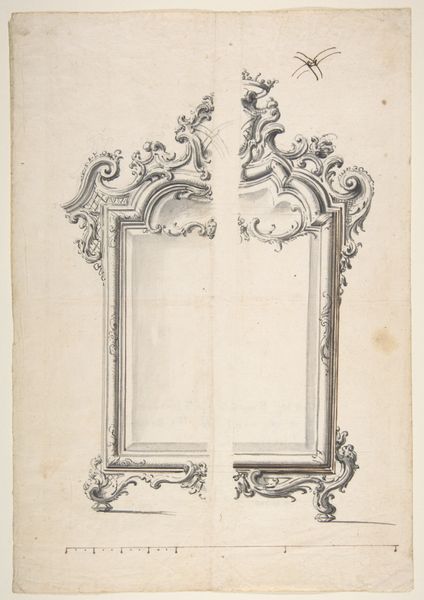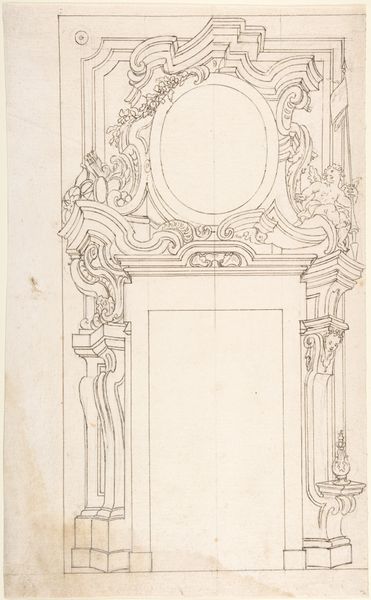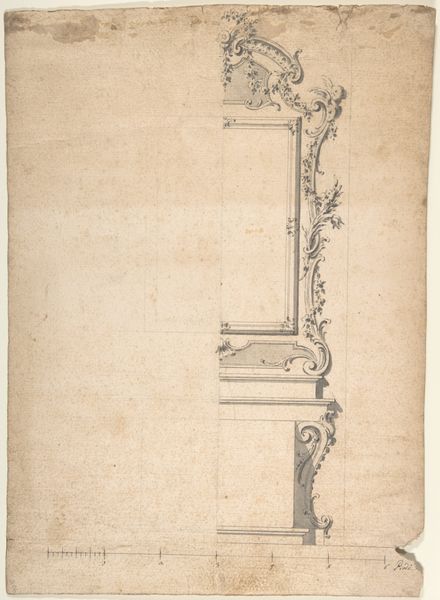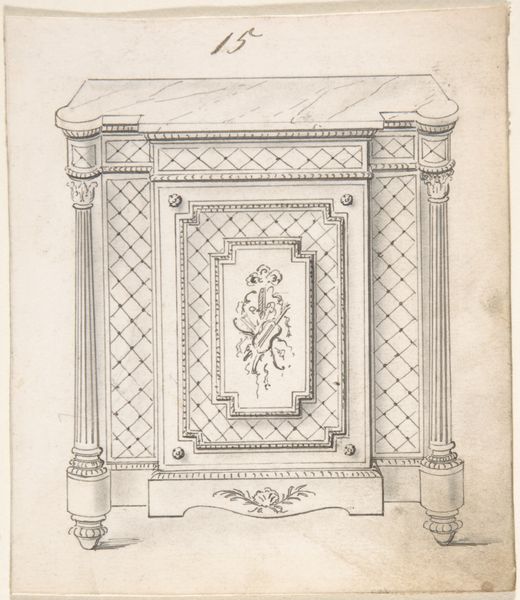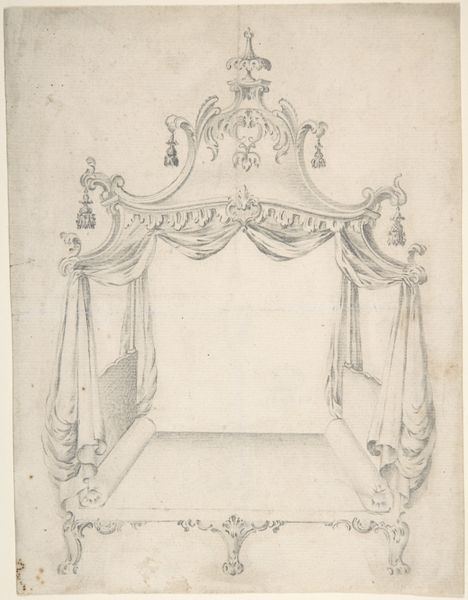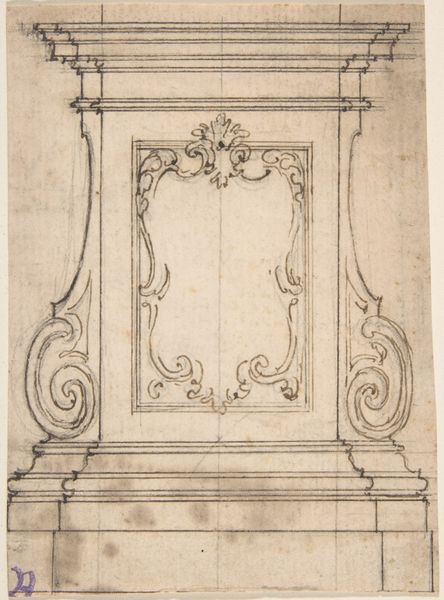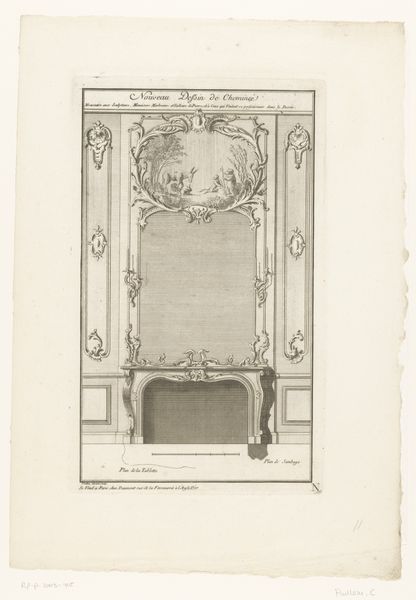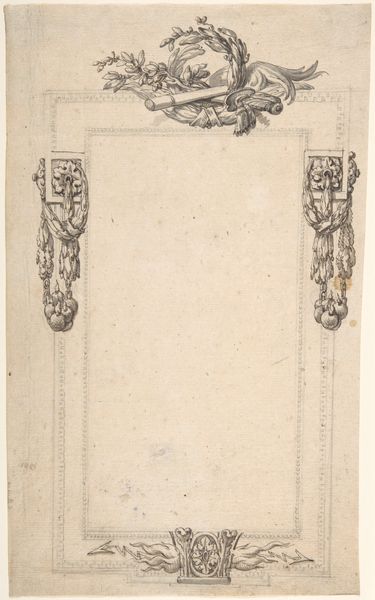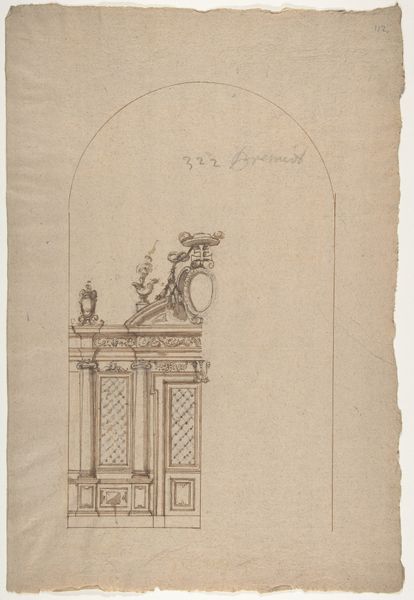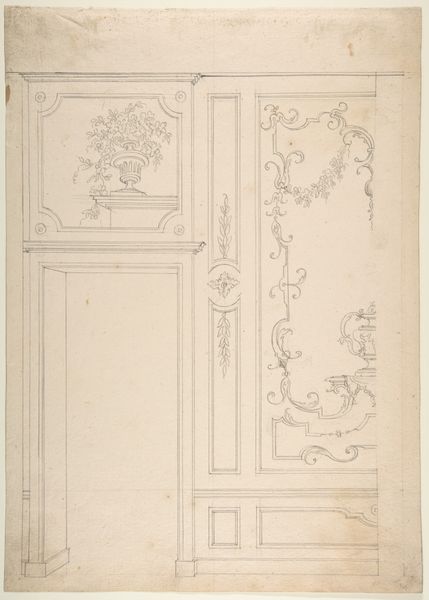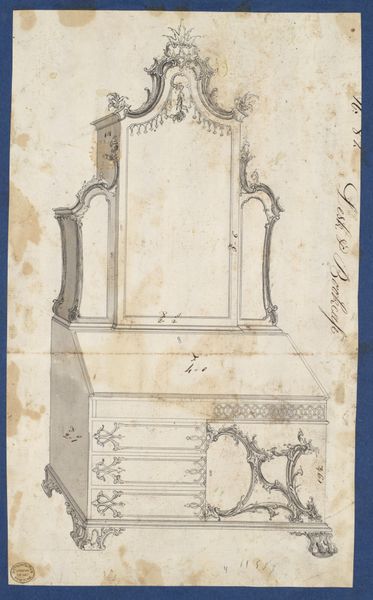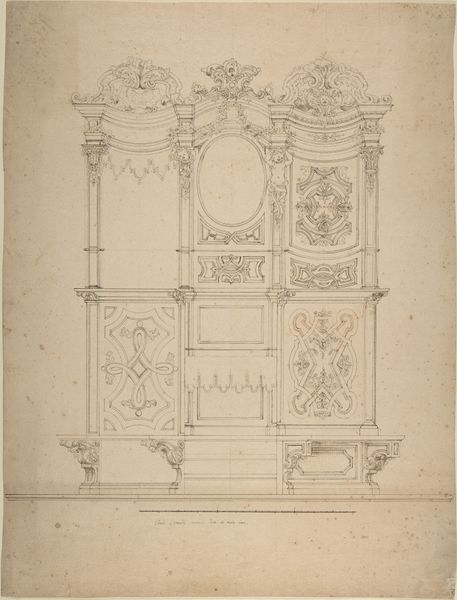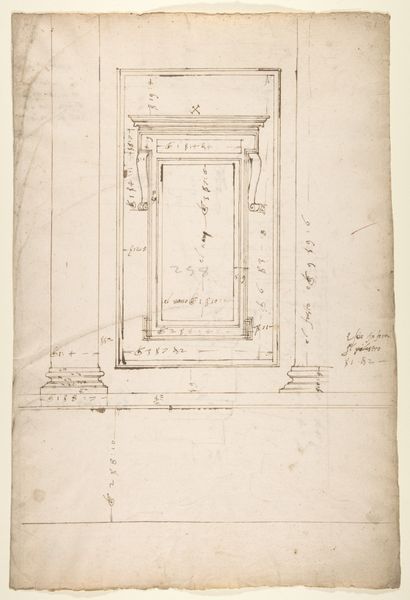
Design for a Door and Stucco Overdoor Decorations 1740 - 1760
0:00
0:00
drawing, print, etching, paper, ink, architecture
#
drawing
#
ink paper printed
# print
#
etching
#
etching
#
paper
#
ink
#
history-painting
#
architecture
#
rococo
Dimensions: sheet: 13 x 7 3/8 in. (33 x 18.7 cm)
Copyright: Public Domain
Curator: This work, an etching in ink on paper, offers a glimpse into 18th-century design. Dating to about 1740-1760, this drawing, titled "Design for a Door and Stucco Overdoor Decorations," is currently held at the Metropolitan Museum of Art. Editor: Intricate. That's the word that comes to mind immediately. Look at how dense and elaborate that overdoor decoration is, poised above the relatively simple lines of the doorway itself. A dance of forms unfolds within this composition, but also seems a bit much... perhaps too heavy and ornate for functional architectural design. Curator: Indeed. The Rococo period favored such flamboyance. This design suggests the aspirations of the era—an aesthetic deeply rooted in theatricality. The door represents an entrance, both physical and perhaps metaphorical, to spaces of status and privilege. Editor: And how deliberately it uses asymmetry! Observe how the scrollwork differs on either side of the overdoor section. Such asymmetry prevents visual monotony and enhances a sense of dynamic movement throughout the design. Do you think that that also reinforces the feeling of theatricality? Curator: Absolutely! Rococo borrowed from stage design extensively. Every curve, every flourish speaks of artifice and curated grandeur. A key question here revolves around this proposed construction project: what statement did such details, especially those above eye level, really communicate to guests and visitors? What value does beauty, here in this particular design vocabulary, actually have? Editor: To communicate that idea through linear articulation alone—achieving such nuance with minimal shading and color— speaks volumes of the draughtsman’s mastery. The ink captures both boldness and finesse simultaneously! I love the textures here and also, the light within the composition. Curator: The emphasis here on verticality directs our eyes skyward. From the earthly entry, our attention then follows these patterns, creating an immediate sensation of reaching toward something...larger. Almost a type of secular worship, you might even argue. Editor: In essence, through observing "Design for a Door and Stucco Overdoor Decorations," one gains insight into the language and symbolic nature of aesthetic periods. The work allows us to dissect a crucial vocabulary of decoration, and it’s quite the privilege. Curator: Absolutely. A beautiful reflection of how visual forms represent not merely artistry, but intricate belief structures in space and time. It lets you wonder: "what does such ornamentation actually signify?"
Comments
No comments
Be the first to comment and join the conversation on the ultimate creative platform.
